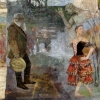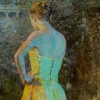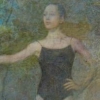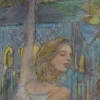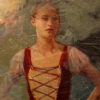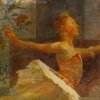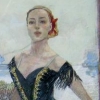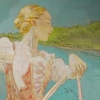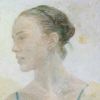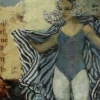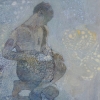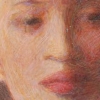Maja Vodanovic and the reflection of the eye
Maja Vodanovic continues her research on the experience and construction of temporal depth in painting. In her earlier 2007 exhibition, this depth was expressed through a perspective composition of different moments assembled in the picture. In her recent work, one can observe, within these fabricated spaces, a more explicit sense of movement whose dimensions are simultaneously poetic and ethical.
At face value, these recent works have as their theme, performance arts such as theatre and dance. Figurations of figurations, these pictures could be seen as twice removed from reality. The main theme is not however the practices of dance and theatre as such. The pictures deal rather with this unique relationship established between the performer and his character. Indeed, the actor is not entirely absorbed into the character. In the theatrical play, where both spectators and actors are involved, both the actor and the character are present and this duality is at the center of the experience of theatre. In many of the pictures at the exhibition, this duality is reinforced by the fact that the performer is not some unknown person imperceptible behind the character. On the contrary, the performer knows the artist and sometimes even commissioned the artwork.
By the same token, the spectator is also transposed to two distinct and parallel places: on the one hand inside the theatre, in front of the performers, on the other hand inside the narrative, in front of the characters.
Consciousness of this duality is not constant, however. It oscillates between the two poles of the object and its image and this movement is at the core of Maja Vodanovic’s work. This movement invites the spectator to enter the work, to identify with the actor and its character and to integrate in his world the meaning of the work. This movement from life towards the art work is not one way only. Art in return transforms life, giving it form and meaning.
This movement could be called transcendence. This word from philosophy and theology, usually understood as an abstraction, is first and foremost a movement, a passage through.
It is the movement shown by the birds and the butterflies, momentarily landed on the canvas, in the portrait of dancers, or in the slow passage of the day into night.
Bernard Olivier
September 25th, 2011
